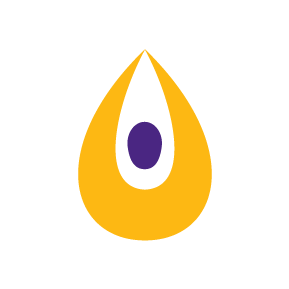Rhythm and Discipline - Leaning into the Unknown
Like many people around the world, recent events have forced me to stay at home. What felt like a normal, rhythmic and productive schedule, with built-in time for self care, is now turned upside-down. Although this time has been trying, and often confusing, there are many things that I have found to be helpful.
Without the need to be at work, or to have the kids at school at a given time, it would be easy to fall into an arrhythmic schedule, sleeping in, irregular bedtimes, etc. One of the things that Yoga and Waldorf pedagogy have in common is the importance of rhythm and discipline. In the context of home-schooling my son, this means getting up at a regular time each day, setting a schedule, and sticking to it. This way, my sensitive second-grader can have some parameters or boundaries to work within, which allow him to feel safe. The general predictability of his schedule lets him relax into whatever he is doing at the given moment. His schedule includes things like stretching, desk work, snacks, and recess. As adults, we may not feel the need to have such an elaborate daily schedule. However, keeping a consistent and regular yoga practice is incredibly helpful. It provides something stable and reliable in our lives. This consistency takes both discipline (tapas), and letting go. We need discipline to stick with it, and we need to let go of the perceived obstacles that prevent us from actually getting to the mat or meditation cushion. Having the discipline to do regular yoga and meditation gives us a “home base” from which to explore.
One of the concepts that I am exploring daily is “groundlessness”. Pema Chodron describes groundlessness as the feeling of no solid ground under our feet. We don’t know what news will come, when this predicament will end, or if life will ever return to normal. Yes, this feels scary. Yet this time provides an opportunity to lean into the unknown. Softening our attempt to be in control allows us to become aware of our fears, desires, and aversions. Yet, we also become aware of the things that are most important to us: connection, and love. “To be fully alive, fully human, and completely awake is to be continually thrown out of the nest. To live fully is to be always in no-man’s-land, to experience each moment as completely new and fresh” (Pema Chodron, When Things Fall Apart). We may not know what the future will be like (do we ever, really?), but we can know our experience through the senses in the present moment. Yoga literally “yokes” the mind to the present moment. Regular practice repeatedly invites us to be present, and the more we practice presence, the more we can perceive reality as it truly is.
Teachers and students all over the world are finding new and creative ways to bolster a consistent and disciplined practice. Here are some ideas to help with motivation:
If you are feeling stressed, do yoga.
Yoga postures can help release the muscles that are chronically tight from stress, or too much computer time. Many teachers are focusing on poses that open the chest or balance the hormones related to stress.
If you are bored, do yoga.
Yoga is a creative outlet. While there are general alignment guidelines and instructions, each person is an individual with a unique expression of the postures, both physically, and energetically.
If you are lonely, do yoga.
Thousands (if not more) of people are practicing yoga together online using platforms like Zoom. We may not be in the same room, but we are sharing practice in “real time” with other students, and this camaraderie creates connection. Even if you are not online, know that each time you step onto your mat, you are walking a path with the estimated 300 million other people who do yoga.
If you are afraid, do yoga.
As Pema Chodron suggests, to live fully is to experience each moment as completely new and fresh. Every time we step onto the mat, we courageously accept our current circumstances and commit to being present with each moment. We don’t know what our downward facing dog will feel like on any given day, but we are willing to step into that unknown and explore.
Regardless of your level, whether you are seated in a chair, or standing on your head, yoga has a way of helping us to befriend what IS in the moment. It is clarifying for the mind, balancing for the body and nervous system, and heart-opening. If we use this time to commit to and deepen our practice, when the challenges subside, we will be ready to step forward with a feeling of readiness and renewal.
Best wishes to you on your yoga path,
Namaste,
Abby
